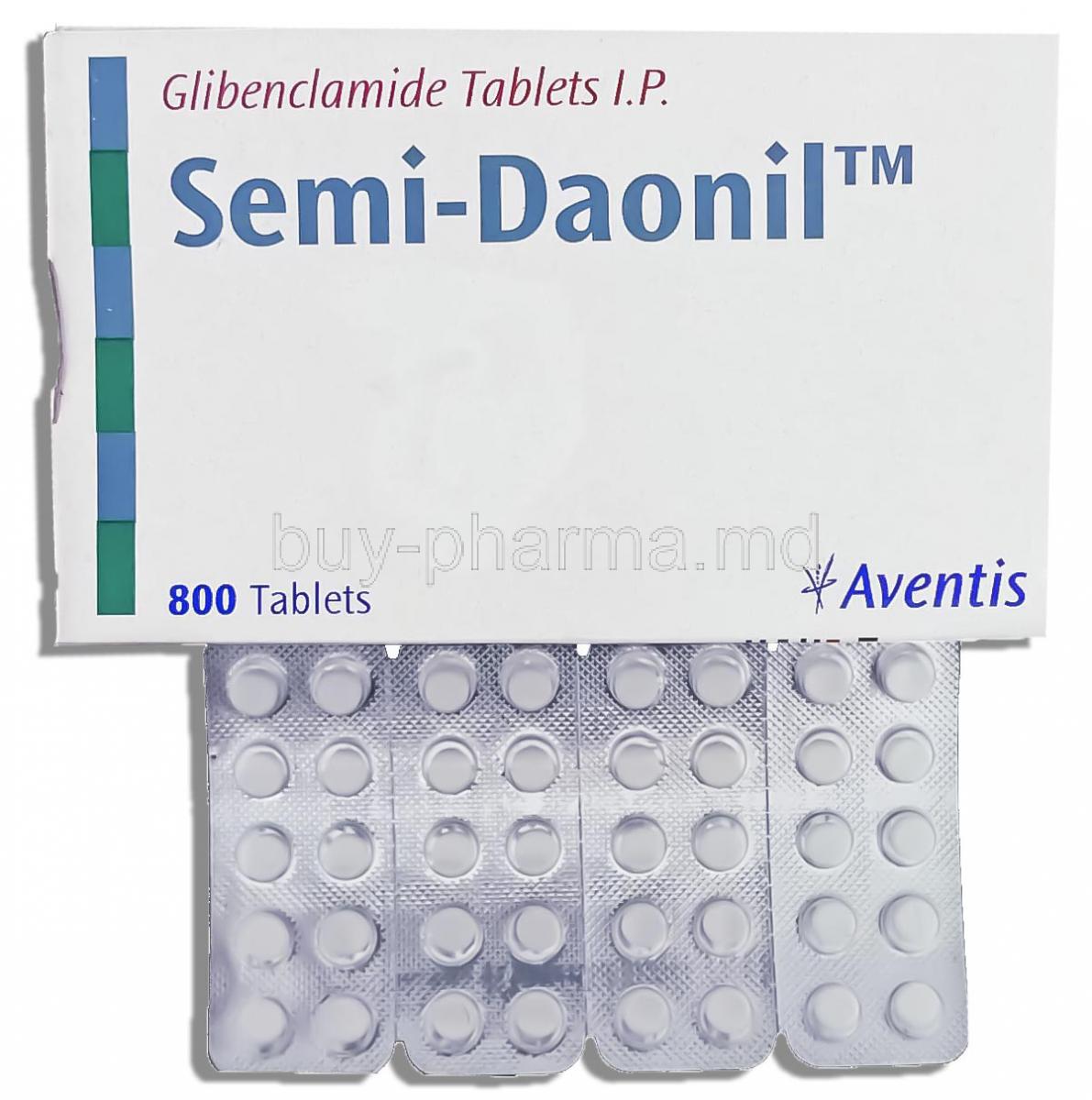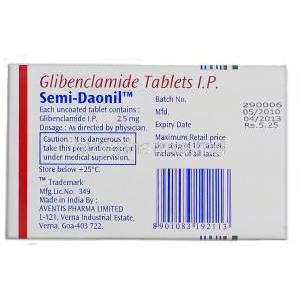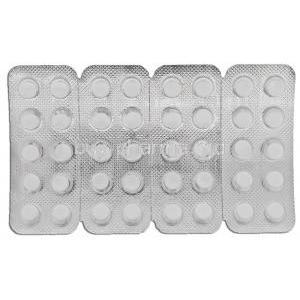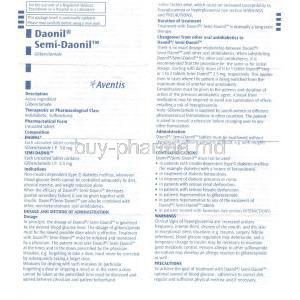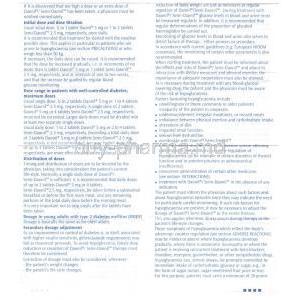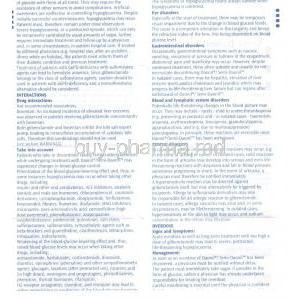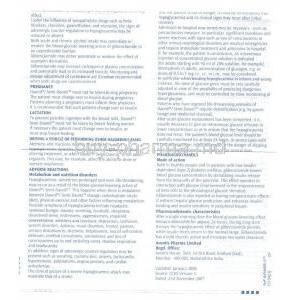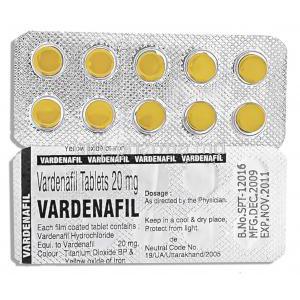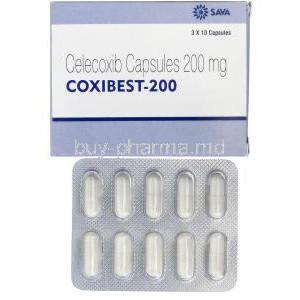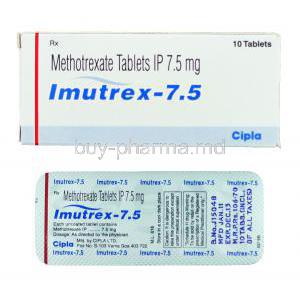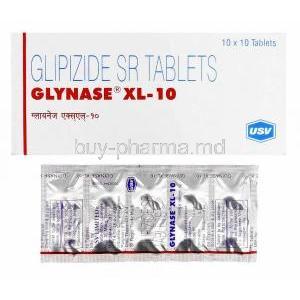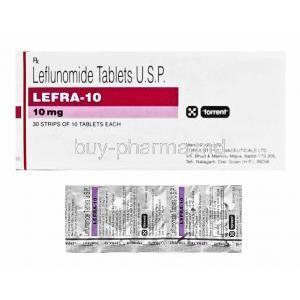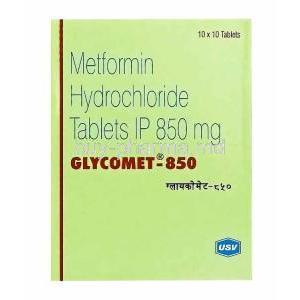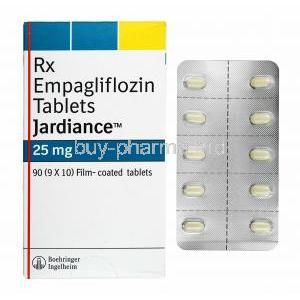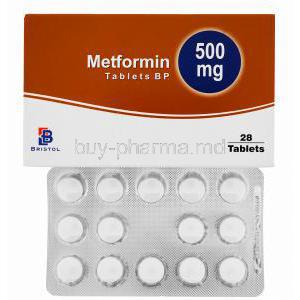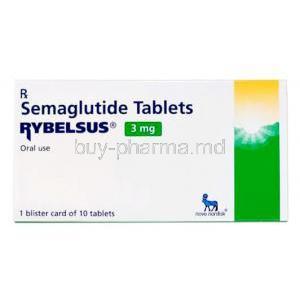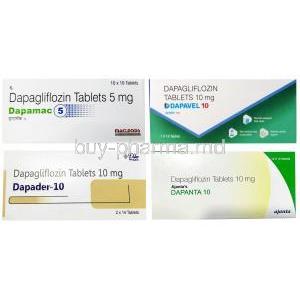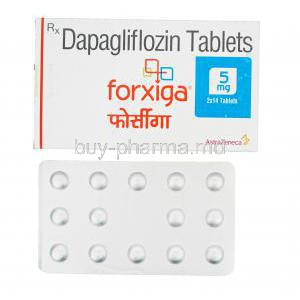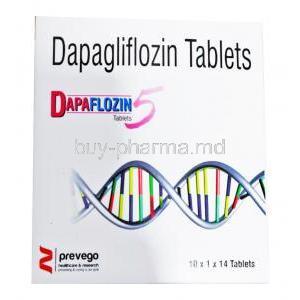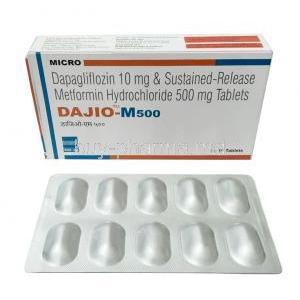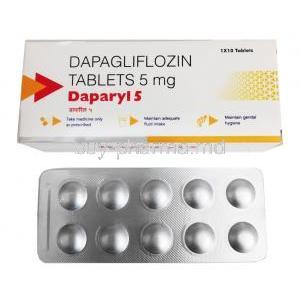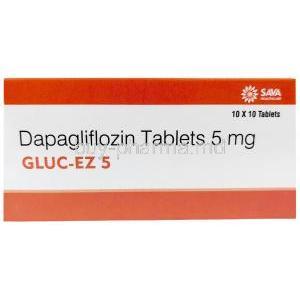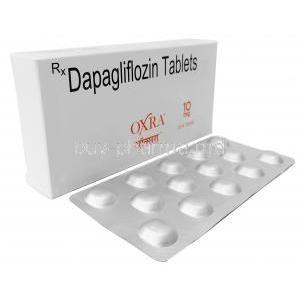Introduction to Semi Daonil (Glibenclamide)
Semi Daonil, known internationally as Glibenclamide or Glyburide, is a potent oral antidiabetic medication used in the long-term management of Type 2 Diabetes Mellitus. Classified as a second-generation sulfonylurea, it is designed to help individuals achieve stable blood glucose control through enhanced pancreatic insulin secretion. The drug remains one of the most trusted oral hypoglycemic agents, prescribed for decades worldwide under brand names such as Daonil, Semi Daonil, and Glyburide.
Originally introduced in the 1970s following extensive research into sulfonylurea derivatives, Glibenclamide was granted FDA approval as part of the effort to provide a safer and more effective alternative to earlier oral antidiabetic drugs. Its enduring relevance in diabetes therapy underscores its clinical reliability and cost-effectiveness in managing chronic hyperglycemia.
Composition and Pharmaceutical Formulation
The active pharmaceutical ingredient in Semi Daonil is Glibenclamide (Glyburide), a white crystalline powder with high lipid solubility. It belongs to the sulfonylurea class of hypoglycemic agents, which act by stimulating insulin release from pancreatic beta cells.
- Available Strengths: Commonly available in 2.5 mg and 5 mg tablet formulations.
- Inactive Ingredients: Lactose monohydrate, maize starch, magnesium stearate, talc, and microcrystalline cellulose are typically included to ensure tablet stability and absorption consistency.
- Pharmacological Classification: Second-generation sulfonylurea, with enhanced potency and lower dosage requirements compared to first-generation agents.
Mechanism of Action (How Glibenclamide Works)
Glibenclamide exerts its glucose-lowering effect by stimulating insulin secretion from functioning pancreatic beta cells. It binds to sulfonylurea receptors (SUR1) located on pancreatic cell membranes, leading to inhibition of ATP-sensitive potassium channels (KATP channels). This causes membrane depolarization and a subsequent influx of calcium ions, triggering insulin release.
In addition, Glibenclamide enhances peripheral glucose utilization and reduces hepatic glucose production, resulting in improved insulin sensitivity in target tissues. These combined effects help maintain stable postprandial and fasting glucose levels.
Approved Medical Uses
- Type 2 Diabetes Mellitus Management: Semi Daonil is indicated for patients with type 2 diabetes whose blood sugar levels remain uncontrolled by diet and exercise alone.
- Monotherapy: Effective as a standalone treatment for mild to moderate hyperglycemia.
- Combination Therapy: Can be used alongside metformin, acarbose, or insulin in cases of poor glycemic control.
- Prevention of Complications: Maintains long-term glycemic balance, reducing risks of neuropathy, nephropathy, and retinopathy.
Off-Label and Investigational Uses
- Gestational Diabetes: Used selectively in pregnant women under specialist supervision when insulin is contraindicated.
- Polycystic Ovary Syndrome (PCOS): Investigated for improving insulin resistance and ovulatory function.
- Metabolic Syndrome: Studied for its role in managing hyperglycemia linked to obesity and insulin resistance.
- Neonatal Diabetes: Experimental use in specific monogenic diabetes cases under close endocrinological monitoring.
Dosage and Administration Guidelines
The dosage of Semi Daonil should be tailored to each individual’s metabolic response and blood glucose targets.
- Initial Dose: 2.5–5 mg once daily, taken with breakfast or the first main meal.
- Maintenance Dose: Typically ranges between 5–15 mg per day in divided doses.
- Missed Dose: Should be taken as soon as remembered, but skipped if it is close to the next scheduled dose.
- Renal or Hepatic Impairment: Dose adjustments are required due to prolonged drug clearance.
- Switching Therapy: Patients transitioning from other oral agents should begin with a lower Glibenclamide dose to avoid hypoglycemia.
Pharmacokinetics and Bioavailability
After oral administration, Glibenclamide is rapidly absorbed, reaching peak plasma concentrations within 2–4 hours. It exhibits high protein binding (~99%) and undergoes hepatic metabolism primarily via the CYP2C9 enzyme system. Its active metabolites are excreted through bile and urine.
- Bioavailability: Approximately 50% due to first-pass metabolism.
- Half-Life: Ranges from 4 to 10 hours, prolonged in elderly or renally impaired individuals.
- Food Effect: Food delays absorption but does not significantly alter overall efficacy.
Side Effects of Glibenclamide
Common Side Effects
- Hypoglycemia — characterized by sweating, tremors, and confusion.
- Weight gain due to increased insulin activity.
- Nausea, mild gastrointestinal upset, or abdominal discomfort.
- Dizziness or fatigue following sudden drops in glucose levels.
Less Common and Serious Adverse Effects
- Hepatic Dysfunction: May induce cholestatic jaundice or elevated liver enzymes.
- Hematologic Reactions: Rare occurrences of leukopenia or thrombocytopenia.
- Allergic Skin Reactions: Rash, pruritus, or photosensitivity.
- Hyponatremia: Occasionally associated with SIADH-like symptoms.
Drug Interactions
- Pharmacodynamic: Enhanced hypoglycemic effect when combined with insulin, metformin, or beta-blockers.
- Pharmacokinetic: CYP2C9 inhibitors (e.g., fluconazole, sulfamethoxazole) increase plasma Glibenclamide concentration.
- Alcohol: May provoke disulfiram-like reactions and unpredictable glucose fluctuations.
- Other Agents: Diuretics, corticosteroids, and oral contraceptives can diminish glycemic control.
Warnings and Precautions
- Hypoglycemia Risk: Particularly in elderly, malnourished, or debilitated individuals due to prolonged drug action.
- Contraindicated in Type 1 Diabetes: Ineffective without functional pancreatic beta cells.
- Dietary Consistency: Skipped meals or excessive physical exertion can precipitate hypoglycemic episodes.
- Stress, Surgery, or Infection: May necessitate temporary insulin therapy or dosage modification.
- Avoid Alcohol: To prevent potentiation of hypoglycemia and hepatotoxicity.
Routine monitoring of blood glucose and HbA1c, along with periodic evaluation of renal and hepatic functions, is essential to ensure safe and effective therapy.
Contraindications
Semi Daonil (Glibenclamide) should not be used in specific clinical situations due to potential safety risks and lack of therapeutic efficacy. Understanding its contraindications is crucial to prevent severe metabolic and systemic complications.
- Hypersensitivity: Patients with known allergies to Glibenclamide, sulfonylureas, or any excipient in the formulation should strictly avoid this medication.
- Type 1 Diabetes Mellitus: Ineffective in individuals lacking functional pancreatic beta cells, as insulin secretion cannot be stimulated.
- Diabetic Ketoacidosis (DKA): Contraindicated during episodes of ketoacidosis, with or without coma, where insulin therapy is mandatory.
- Severe Hepatic or Renal Impairment: Accumulation of the drug or its metabolites may increase the risk of prolonged hypoglycemia and toxicity.
- Pregnancy and Lactation: Use is generally discouraged unless no safer alternative exists and potential benefits outweigh risks to the fetus or infant.
Careful Administration and Monitoring
Proper monitoring ensures both efficacy and safety during Glibenclamide therapy. Regular evaluation prevents avoidable hypoglycemic episodes and organ-related adverse events.
- Blood Glucose and HbA1c Monitoring: Frequent assessment is essential to maintain optimal glycemic control and adjust dosage accordingly.
- Liver and Kidney Function Tests: Periodic screening helps detect early signs of hepatic or renal dysfunction that could alter drug metabolism.
- Weight Changes and Caloric Restriction: Adjustments in dose are recommended during weight loss, dietary modifications, or prolonged fasting.
- Concurrent Illness: Vigilance for hypoglycemia is vital during infections, stress, or acute illnesses where caloric intake fluctuates.
Administration in Special Populations
Elderly Patients
Older adults exhibit decreased renal clearance, making them more vulnerable to drug accumulation and hypoglycemia. Lower initiation doses, gradual titration, and close monitoring are strongly advised. Individualized glycemic targets should be prioritized, balancing tight control with safety to minimize adverse events such as falls or confusion due to hypoglycemia.
Pregnant and Nursing Women
Glibenclamide crosses the placental barrier and may induce fetal hypoglycemia. Insulin remains the preferred therapy during pregnancy. Transition to insulin is recommended as soon as pregnancy is confirmed. Because Glibenclamide is excreted in breast milk, its use during lactation is contraindicated to avoid neonatal hypoglycemia or toxicity. Alternative therapies should be considered under obstetric supervision.
Pediatric Use
The safety and efficacy of Glibenclamide in children have not been well established. Its use is restricted to specialized cases such as monogenic or neonatal diabetes under the direct supervision of a pediatric endocrinologist. Routine pediatric use is not recommended due to the high risk of unpredictable glucose fluctuations.
Overdosage and Toxicity Management
Overdose of Glibenclamide primarily manifests as severe and prolonged hypoglycemia, which can be life-threatening if untreated.
- Clinical Presentation: Symptoms include confusion, blurred vision, tremors, sweating, convulsions, and loss of consciousness.
- Immediate Management: Administer oral glucose for mild cases, or intravenous dextrose infusion in unconscious patients.
- Monitoring: Continuous observation of blood glucose for at least 24–48 hours is crucial due to Glibenclamide’s prolonged half-life.
- Emergency Measures: Glucagon may be given intramuscularly or intravenously to rapidly counteract hypoglycemia when IV access is not immediately available.
Handling and Storage Precautions
Proper handling and storage preserve the stability and therapeutic integrity of Semi Daonil tablets.
- Storage Conditions: Store below 25°C in a dry place, protected from light and humidity.
- Safety: Keep out of reach of children to prevent accidental ingestion and hypoglycemia.
- Disposal: Dispose of expired or unused tablets according to local pharmaceutical waste guidelines.
- Stability: Semi Daonil maintains potency for its indicated shelf-life when stored as directed.
Patient Education and Lifestyle Guidance
Effective management of diabetes extends beyond medication. Patients must adhere to a comprehensive lifestyle plan to maximize therapeutic outcomes.
- Adherence: Take medication consistently with meals to reduce hypoglycemia risk and enhance insulin response.
- Hypoglycemia Awareness: Learn to identify early warning signs—shakiness, sweating, or confusion—and carry glucose tablets or sugary snacks for emergencies.
- Diet and Exercise: Follow a balanced diet rich in complex carbohydrates, maintain regular physical activity, and avoid excessive fasting or alcohol intake.
- Follow-Up: Routine medical checkups and glucose testing help adjust therapy based on individual progress and prevent complications.
Summary and Key Takeaways
Glibenclamide (Semi Daonil) remains a cornerstone therapy for Type 2 Diabetes Mellitus due to its proven efficacy in reducing blood glucose levels and preventing long-term complications. However, its use demands careful patient selection, ongoing monitoring, and lifestyle coordination to ensure safety and effectiveness.
- Highly effective in stimulating pancreatic insulin secretion.
- Requires strict adherence to dosing and dietary consistency.
- Not suitable for patients with severe hepatic, renal, or endocrine impairment.
- Individualized therapeutic strategies and vigilant monitoring minimize hypoglycemic risk.
With appropriate supervision and patient education, Semi Daonil continues to play a vital role in achieving durable glycemic control in adult diabetics worldwide.
Semi Daonil, Glibenclamide FAQ
- What is the use of semi Daonil Tablet?
- What is Daonil Tablet used for?
- What is the drug glibenclamide used for?
- Is glibenclamide the same as metformin?
- When is the best time to take glibenclamide?
- What should I avoid while taking glibenclamide?
- Which is better glimepiride or glibenclamide?
- Can you take glibenclamide and metformin together?
- Can glibenclamide cause weight gain?
- What is another name for glibenclamide?
- What are the side effects of glibenclamide metformin?
- Can glimepiride and glibenclamide be taken together?
- What are the benefits of glibenclamide?
- Is glibenclamide a high risk medication?
- How long does glibenclamide stay in your system?
- Is glibenclamide better than metformin?
- What are the precautions for glibenclamide?
- When to stop glibenclamide?
- What are the long-term effects of glibenclamide?
- Why is metformin combined with glibenclamide?
- What to avoid while taking glibenclamide?
- Can glibenclamide cause weight loss?
- Why is glibenclamide avoided?
- Is glibenclamide safe for kidneys?
- How much does glibenclamide lower blood sugar?
- What are the benefits of glibenclamide?
What is the use of semi Daonil Tablet?
Semi Daonil 2.5 mg tablet is a medicine used to treat type 2 diabetes mellitus in adults. It sits in the sulfonylurea family, prompting the pancreas to release insulin and thereby keeping blood‑sugar levels from soaring. By taming those glucose spikes, the drug helps steer clear of the complications diabetes can bring, such as kidney damage and blindness.
What is Daonil Tablet used for?
Daonil is the drug for bringing blood sugar into the normal range in folks with type 2 diabetes mellitus—a version of the disease often labeled non‑insulin‑dependent diabetes (NIDDM) or adult‑onset diabetes.
What is the drug glibenclamide used for?
Glibenclamide is employed in the management of type 2 diabetes mellitus. It is taken alongside a diet. Exercise to help adult patients with type 2 diabetes achieve blood‑sugar control. In essence, glibenclamide is a medication.
Is glibenclamide the same as metformin?
No
When is the best time to take glibenclamide?
Take glibenclamide when you sit down for or immediately after your meal of the day (usually breakfast).
What should I avoid while taking glibenclamide?
Skip the alcohol when taking this medication, as it can trigger a chain of reactions—flushing, nausea, vomiting, headache, a rapid heartbeat, quick breathing, and a dizzy, giddy feeling.
Which is better glimepiride or glibenclamide?
Glimepiride is tied to a higher chance of hypoglycemic events.
Can you take glibenclamide and metformin together?
Yes
Can glibenclamide cause weight gain?
Yes
What is another name for glibenclamide?
Glyburide
What are the side effects of glibenclamide metformin?
- Low blood sugar
- Nausea
- Stomach pain
- Diarrhea
- headache
- Upper Respiratory tract infection
Can glimepiride and glibenclamide be taken together?
In practice metformin is often paired with sulfonylureas (glimepiride and glibenclamide) forming an adopted regimen for treating type 2 diabetes mellitus.
What are the benefits of glibenclamide?
Glibenclamide assists people with diabetes in lowering their blood sugar when diet changes alone don’t suffice.
Is glibenclamide a high risk medication?
Yes
How long does glibenclamide stay in your system?
15 hours
Is glibenclamide better than metformin?
Glibenclamide seems to be just as capable as metformin (Glucophage) or insulin at managing blood sugar. It carries a burden of maternal side‑effects—more frequent maternal hypoglycemia, a rise in pregnancy‑induced hypertension (PIH) and preeclampsia compared with metformin and a tendency toward higher rates of macrosomia and neonatal hypoglycemia.
What are the precautions for glibenclamide?
Do not give this medication if any of the following conditions are present: a sulfonamide allergy; type‑1 diabetes, juvenile diabetes, ketoacidosis; hepatic impairment.
When to stop glibenclamide?
Even if you start feeling better you shouldn’t quit glibenclamide on your own; blood‑sugar can still fluctuate.
What are the long-term effects of glibenclamide?
The analysis revealed a risk of adverse cardiovascular events (MACE; HR 1.18) alongside a greater propensity for myocardial infarction and all‑cause mortality.
Why is metformin combined with glibenclamide?
When metformin and glibenclamide are used together, the duo outperforms either medication at tightening control in type‑2 diabetes, and it also makes it feasible to cut the dose of each drug.
What to avoid while taking glibenclamide?
- Alcohol
- Refined grains
- Sugary drinks
Can glibenclamide cause weight loss?
Yes
Why is glibenclamide avoided?
Risk of hypoglycemia
Is glibenclamide safe for kidneys?
No
How much does glibenclamide lower blood sugar?
20%
What are the benefits of glibenclamide?
When diet adjustments alone don’t keep blood sugar under control, glibenclamide can help bring those levels down for people with diabetes.

